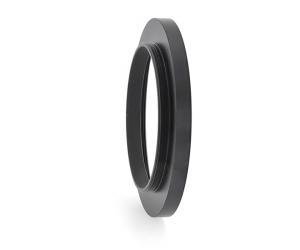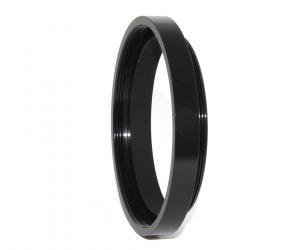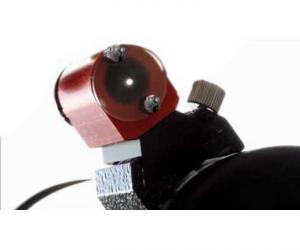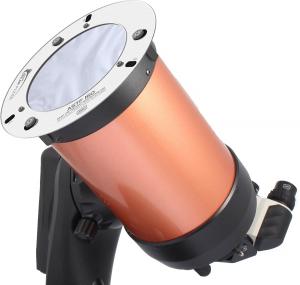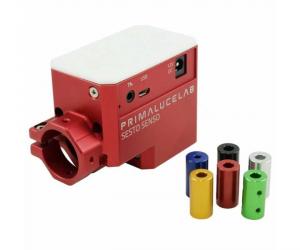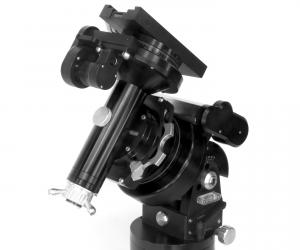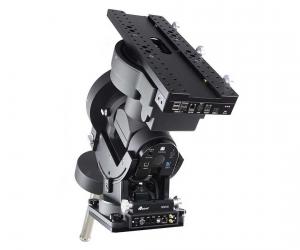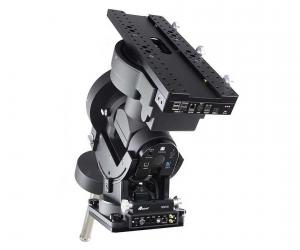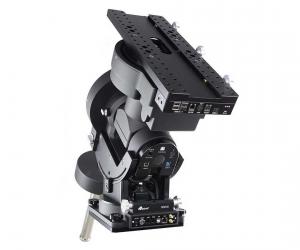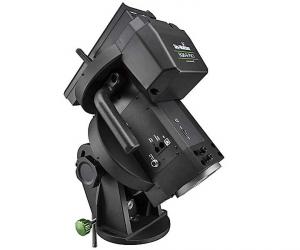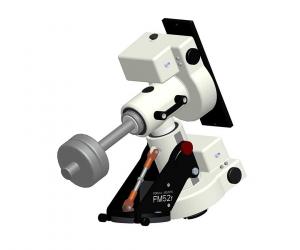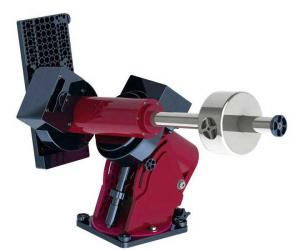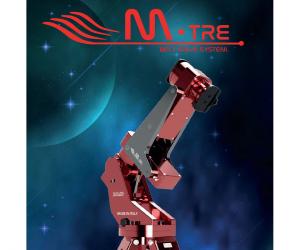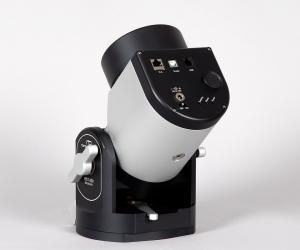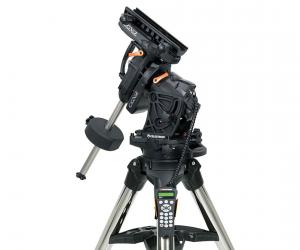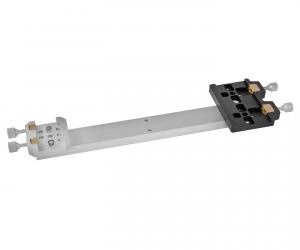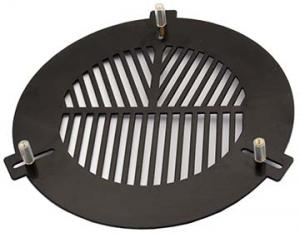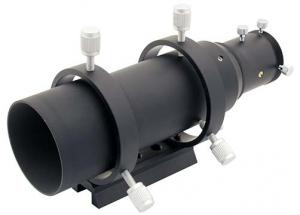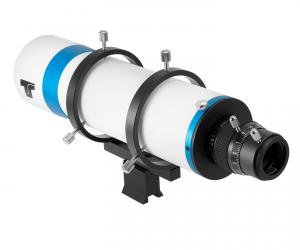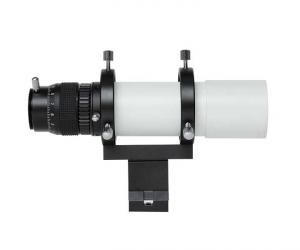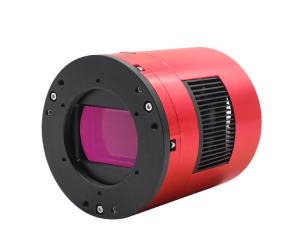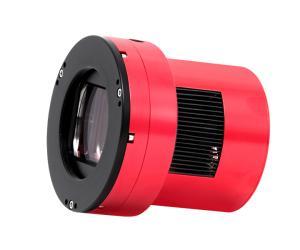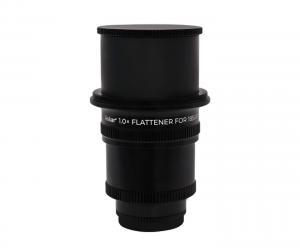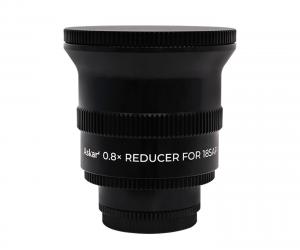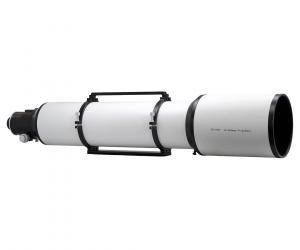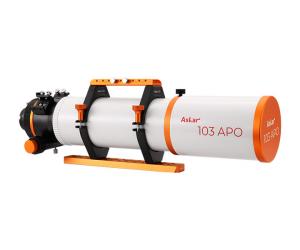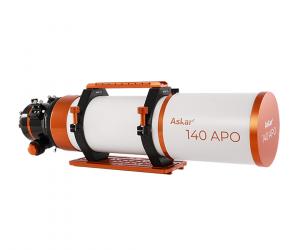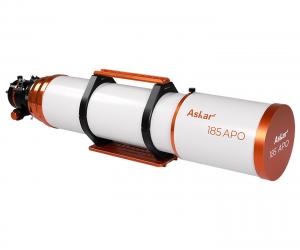- Telescopes
- Overview:
Telescopes - Achromatic Refractor
- Apochromatic Refractor
- Overview:
Apochromatic Refractor - ED Refractor - less color aberration than an achromatic
- SD APO - color free 2-element APO objective
- EDT APO - 3 element ED objective
- High End APO with 3-element APO objective - no color aberation
- Flatfield APO with flat field for Astrophotography
- All Apos and EDs from all manufacturers - large overview
- TS APO and ED from Japan with high quality optics
- Overview:
- Newtonian Telescopes
- Dobsonian Telescopes
- RC Ritchey Chretien Telescopes
- Casssegrain Telescopes
- Reflektor Telescopce with Lens Correcture
- Maksutov Cassegrain Telescopes
- GoTo Telescopes
- Solar Telescopes H-Alpha
- Overview:
- Mounts Tripods Rings Rails Power Supply ...
- Overview:
Mounts Tripods Rings Rails Power Supply ... - Mounts Equatorial with GoTo
- Mounts Equatorial without GoTo
- Mounts Azimutal with GoTo
- Mounts Azimutal without GoTo
- Mounts GoTo - Harmonic Drive
- Travel mounts for astro imaging
- Tripods Piers Polar Wedges
- Mount Control & Electronics
- Dovetail Clamps, Plates and Mount Adapters
- Tube Rings
- Power Supply
- Counterweights Balance Weights
- Mount Accessories - Other
- Overview:
- Telescope Accessories
- Overview:
Telescope Accessories - Eyepieces
- Barlows & Reducer Lenses
- Diagonal Mirrors and Prisms
- Binocular Viewers
- Finder Scopes
- Telescope Collimation and Test
- Cleaning Tools
- Transport and Storage
- Dust protection for Telescopes & Accessories
- Stray Light Protection
- Dewcaps and Heater
- Focusers, Adapters, Motorfocus
- Telescope DIY & Improvement
- Other telescope accessories
- Replacement Parts
- Overview:
- Filters
- Overview:
Filters - Color Filters and Color Filtersets
- Nebular Filters for Visual Observing
- Neutral-Density and Polfilter
- Photo Narrowband Nebular Filters
- Photo Broadband Filters
- Photo Planetary Filters
- Photo R-G-B and IR Cut Filters
- Photo - Filtersets
- Photometric Filters
- Clip Filter for DSLR Cameras
- Filter Wheels and Filterslider
- Solar Filters for white light
- Solarfilter for H-Alpha and Calcium
- Overview:
- Adaptors
- Overview:
Adaptors - Adapter 1,25" and 24,5mm
- Adapter 2"
- Adapter T2 - M42x0.75
- Adapter M48x0,75
- Adapter M54
- Adapter SC
- Adapter M63
- Adapter M68
- Adapter to other Threads
- Adapter Extensions
- Adapter camera bayonet
- Adapter Objective Filterthread
- Adapter Quick Changing , Rotation
- Adapter Eyepiece Projection
- Adapters Tilting
- Overview:
- Astrophotography and Photography
- Overview:
Astrophotography and Photography - Cooled Cameras
- Cameras without Cooling
- Deep-Sky Cameras uncooled
- Set-Offers Camera, Filter, Wheels
- Acessories for Cameras
- Travel mounts for astro imaging
- Imaging Correctors for Telescopes
- Autoguiding Cameras & Sets
- Everything for Guiding
- Focusing aids - Bahtinov mascs
- Flat Field foils and boxes
- Lenses for Cameras
- Piggyback Camera Holder
- Camera Bags, Photocases & more
- Digital Camera and Smartphone Adapter
- Other photo accessories
- Overview:
- Binoculars, Spotting Scopes, Microscopes, Range Finders
- Overview:
Binoculars, Spotting Scopes, Microscopes, Range Finders - Roof Prism Binoculars
- Binoculars with Porro prisms
- Binoculars from 100mm Aperture
- Binoculars with 1,25 inch eyepieces
- TSMX APO Binoculars
- Binoculars for Astronomy
- Binoculars Hiking Bird watching
- Monoculars - Opera Binoculars
- Accessories for Binoculars
- Spotting Scopes
- Range Finders
- Microscopy
- Bags for Phototripods & Binoculars
- Overview:
- Phototripods and Binomounts
- Books, Software
- Overview:
Books, Software - Books for Astronomy Beginners
- Star Charts and Planispheres
- Books about our Solar System
- Observing Tips for Amateurs
- Popular Astronomy Literature
- Teaching material
- Astrophotography books
- Telescopes, Observatories, Construction
- Calendars Yearbooks
- Software, Star Charts
- Books for Microscopers
- Books Nature and Animals
- Nature Photography TimeLapse
- Overview:
- Night Vision, Magnifiers, Weather, Domes & more
- Beginner Astronomy and Gift Ideas
- Second Hand & Special Offers
- New products
Manufacturer: Askar Sharpstar
Product number: AS203APO
EUR9455.00new
EUR 9.455,00
incl. 19 % VAT (DE)
The VAT indicated refers to that applicable in Germany. After logging in, the VAT amount is adjusted to the applicable VAT of the stored delivery country. Therefore, the final price may vary accordingly.
excl. 54.94 € shipping costs (DE)
more details to the shipping costs ...Please log in to calculate shipping costs to your country.
There are no reviews for this product
- Details..
- Technical data..
- In the box..
- Manufacturer infos..
- Safety informations..
Askar 203 mm f/7 EDT triplet apochromat with 3.5? RAP focuser
This apo is one of the largest apochromatic refractors on the market and ideal for observatories. Sharpstar also offers uncompromisingly good value for money with this apo. Teleskop-Service tests every APO mechanically and optically before storing it. Only first-class objectives leave our warehouse.
The air-spaced triplet apo objective
The Askar APO series uses special optical designs and multiple elements to correct chromatic aberration, resulting in a higher quality image. ED glass, also known as low dispersion glass, is an optical glass specifically designed to reduce chromatic aberration.
Integrated tube extension for more flexibility
The tube has an integrated extension that can be extended or retracted as required and locked in place with a clamping ring. This allows the AS203APO to be used not only for photography but also for visual observation. The working distance is large enough for the use of a star diagonal mirror and binoviewer.
The 3.5" rack-and-pinion focuser
The Askar Apo is equipped with a stable 3.5-inch rack and pinion focuser with speed reduction, which is compatible with most current focusing motors. The drawtube travel is 100 mm. The entire focuser is CNC-machined and has an anti-reflection coating on the inside. A scale makes it easier to set a specific position. Two finder shoes are included in the scope of delivery.
The large 360° rotator has precise scales for easy adjustment and a large locking screw that is easy to tighten even under heavy loads. Adapters for 2" and 1.25" accessories complete the equipment.
The tube is CNC-machined and finished with a durable paint or anodized.
Teleskop-Service guarantees the optical and mechanical quality through 100% testing
Every single apo is checked in our technical department before being stored to guarantee consistently high product quality. The mechanics are tested and the focuser is optimally adjusted. The lens is cosmetically checked and cleaned. We also check that all counter screws are correctly tightened. These often loosen during transportation. The optics are collimated and the result is checked on the optical bench. The telescope is given a serial number. A complete optics test is carried out, which is enclosed with the telescope (star images and ronchi image on the optical bench in autocollimation). Only then are the telescopes handed over to the warehouse and prepared for dispatch.
Technical information
Teleskop-Service has collected a lot of helpful information on refractors and made it available as a PDF file: refractors.pdf
This apo is one of the largest apochromatic refractors on the market and ideal for observatories. Sharpstar also offers uncompromisingly good value for money with this apo. Teleskop-Service tests every APO mechanically and optically before storing it. Only first-class objectives leave our warehouse.
The air-spaced triplet apo objective
The Askar APO series uses special optical designs and multiple elements to correct chromatic aberration, resulting in a higher quality image. ED glass, also known as low dispersion glass, is an optical glass specifically designed to reduce chromatic aberration.
Integrated tube extension for more flexibility
The tube has an integrated extension that can be extended or retracted as required and locked in place with a clamping ring. This allows the AS203APO to be used not only for photography but also for visual observation. The working distance is large enough for the use of a star diagonal mirror and binoviewer.
The 3.5" rack-and-pinion focuser
The Askar Apo is equipped with a stable 3.5-inch rack and pinion focuser with speed reduction, which is compatible with most current focusing motors. The drawtube travel is 100 mm. The entire focuser is CNC-machined and has an anti-reflection coating on the inside. A scale makes it easier to set a specific position. Two finder shoes are included in the scope of delivery.
The large 360° rotator has precise scales for easy adjustment and a large locking screw that is easy to tighten even under heavy loads. Adapters for 2" and 1.25" accessories complete the equipment.
The tube is CNC-machined and finished with a durable paint or anodized.
Teleskop-Service guarantees the optical and mechanical quality through 100% testing
Every single apo is checked in our technical department before being stored to guarantee consistently high product quality.
Technical information
Teleskop-Service has collected a lot of helpful information on refractors and made it available as a PDF file: refractors.pdf
| Objective: | Air-spaced triplet apochromat (including one ED glass) |
| Aperture: | 203 mm |
| Focal length: | 1421 mm |
| Focal ratio: | f/7 |
| Diameter of dewshield: | 229 mm |
| Total length: | 1141 mm with dew shield retracted |
| Length of the extendable tube extension: | 150 mm |
| Thread on the focuser: | M84 female thread |
| Adapter: | 2"/1.25" |
| Mount connection: | Three tube rings and a 500 mm long Losmandy style dovetail bar |
| Tube weight: | 23.5 kg including rings and adapter plate |
| Manufacturer / Importeur: | Teleskop-Service Ransburg GmbH |
| Street: | Von-Myra-Str. 8 |
| ZIP / City: | 85599 Parsdorf |
| Country: | Germany |
| Telefon number: | +49 89 99228750 |
| Email: | info@teleskop-service.de |
| Website: | www.teleskop-service.de |
Safety informations: PDF Download
Recommended accessories
Adaptors
Finder & Accessories
General Accessories
Mounts
Losmandy Mount G11T Titan with Gemini 2 Controller, incl. foldable Tripod - separable
EUR 6.990,00RRP EUR 7.990,00you save 12.5% (EUR 1.000,00)
iOptron CEM120 center balanced GoTo mount - payload 52 kg
EUR 4.999,00RRP EUR 6.190,00you save 19.2% (EUR 1.191,00)
iOptron CEM120 center balanced GoTo mount with encoder - payload 52 kg
EUR 5.999,00RRP EUR 8.799,00you save 31.8% (EUR 2.800,00)
iOptron CEM120 center balanced GoTo mount with Dual High Precision Encoder
EUR 8.413,00RRP EUR 10.490,00you save 19.8% (EUR 2.077,00)
Photo Acessories
TS-Optics Bahtinov Mask for Astrophotography - D= 215 - 260 mm
EUR 27,90RRP EUR 38,00you save 26.6% (EUR 10,10)
TS-Optics Deluxe 50 mm Guiding/Finder scope with micro focusing
EUR 119,00RRP EUR 139,00you save 14.4% (EUR 20,00)
ZWO Color Astro Camera ASI2400MC-PRO cooled, Sensor D=43.3 mm
EUR 3.690,00RRP EUR 5.290,00you save 30.2% (EUR 1.600,00)
Askar 1.0x Corector for the 185mm f7 Triplet APO
EUR 389,00RRP EUR 579,00you save 32.8% (EUR 190,00)
Askar 0,8x Reducer - Corrector for the 185mm f7 Triplet APO
EUR 399,00RRP EUR 489,00you save 18.4% (EUR 90,00)
Similar Products
Askar 103 mm f/6.8 Triplet Apo - EDT Design - 3.3 inch RAP focuser - with optical test
EUR 1.299,00RRP EUR 1.391,00you save 6.6% (EUR 92,00)
Askar 120 mm f7 Triplet APO - EDT Design - 3.5 inch RAP focuser - with optical test
EUR 1.890,00RRP EUR 1.990,00you save 5% (EUR 100,00)
Askar 140 mm f/7 Triplet APO - EDT Design - 3.5 inch RAP focuser with optical test
EUR 2.750,00RRP EUR 2.999,00you save 8.3% (EUR 249,00)
Askar 185 mm f/7 Triplet Apo - EDT Design - 3.5 inch RAP focuser - with optical test
EUR 5.999,00RRP EUR 6.190,00you save 3.1% (EUR 191,00)
Transport & Covers
Reviews






















